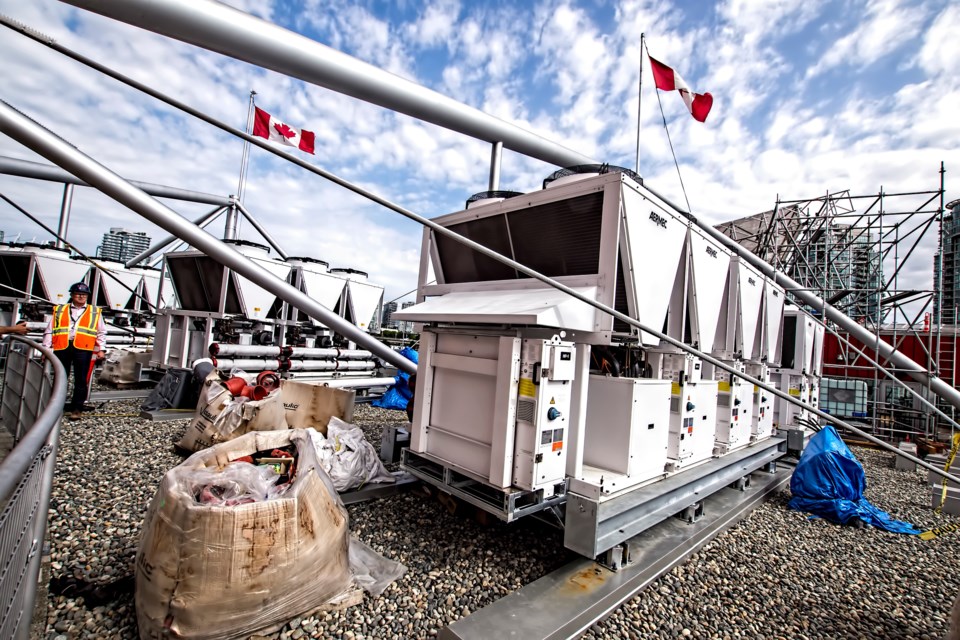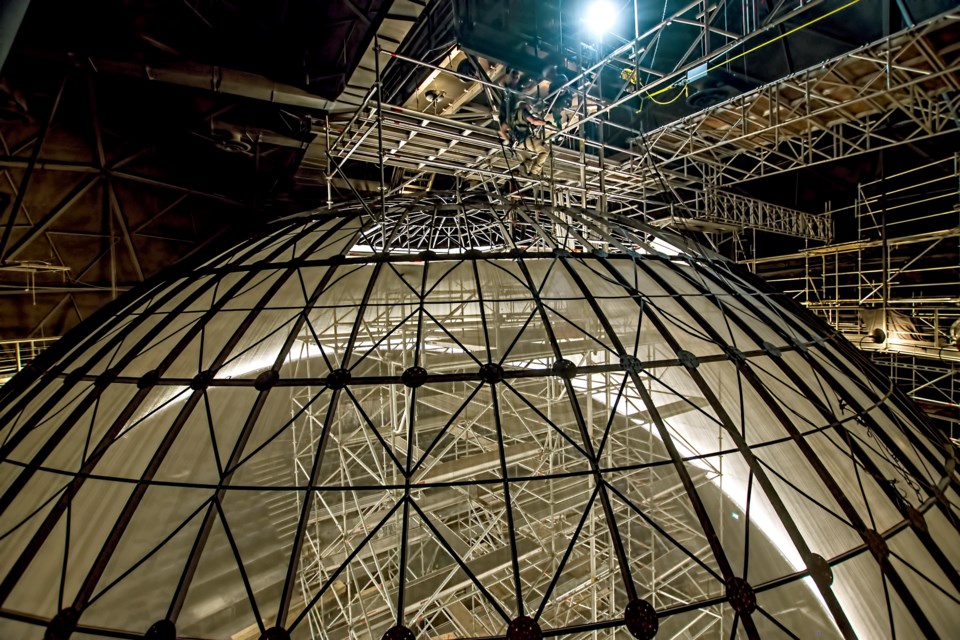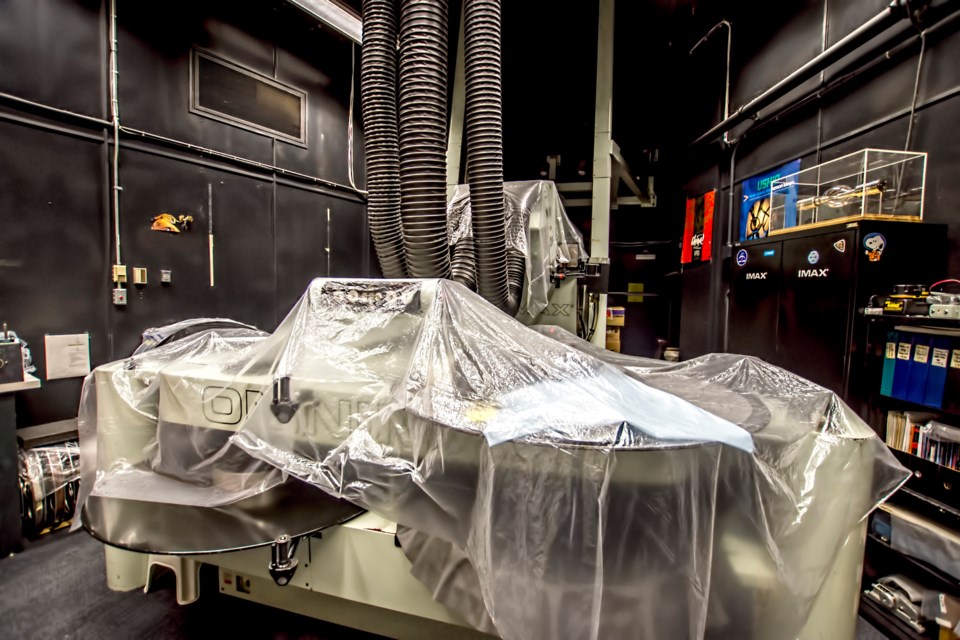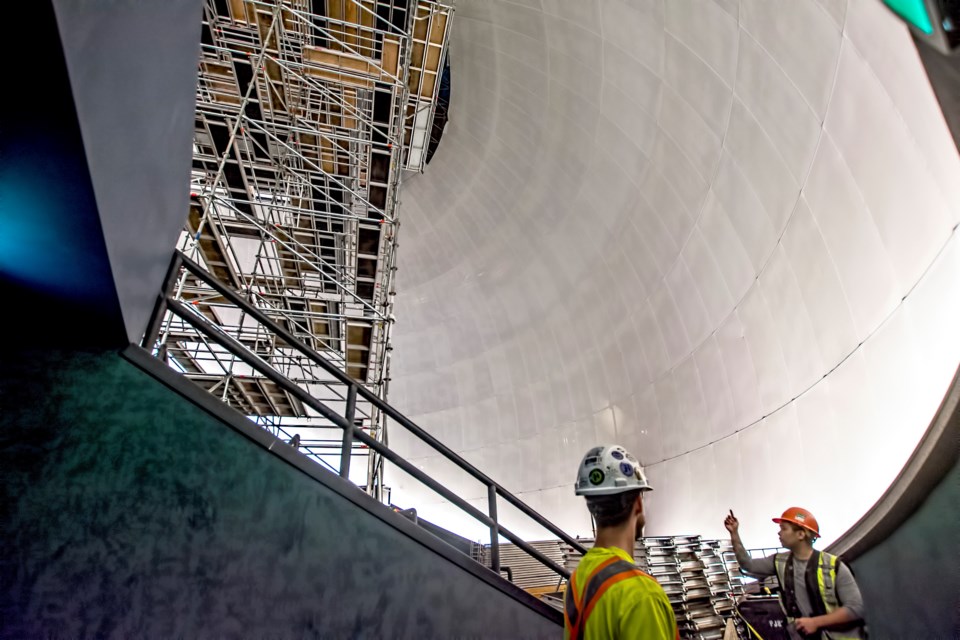Science World is performing major energy retrofits, with the building’s unique structure requiring the Vancouver institution to use some innovative science of its own.
The goal of the $39-million project, which started in 2022, is not just to lower carbon emissions, but also to set an example of how large, architecturally complex structures can be insulated and electrified. It comes as City of Vancouver rolls out new carbon reporting requirements.
“Based on everything we’re doing, we will be a role model for other public facilities that are looking to become more sustainable,” said Tracy Redies, president and CEO of Science World.
“Doing this retrofit after 40 years was really important to [our] future, and in the process, we’ve actually been able to do a lot of unique things.”
Science World, a charity occupying a provincial building on city land, was originally intended to be a temporary structure for Expo 86. After decades, the building was leaking into buckets, and consuming lots of energy for heating and cooling.
The science centre is now using novel techniques to upgrade its facility and install the latest energy tech, including 12 heat pumps and chillers, 298 solar panels and a new pump room for piping and plumbing.

Because the building partially sits over water on pilings, hoisting mechanical equipment onto the building’s roof meant using the largest crane in Western Canada.
Brian Radburn, chief operating officer of Science World, said the crane that did the lift had to sit partly on a deck and partly on land, and that the land is “sort of primordial mud.”
The science centre wasn’t sure if the crane would be able to deal with those conditions, he said.
“We had to drill holes, do a soil sample, a whole bunch of different things,” Radburn said.
Getting other heavy items upstairs requires a custom-built electric pallet jack to traverse an internal ramp that is two football fields in length.
Meanwhile, insulating the inside of the dome requires $1 million in scaffolding that took four months to build, with a rescue simulation on the dome planned for worker safety.

Redies said this sort of "value engineering" is rarely done at this scale, and was made more challenging by the science centre’s decision to stay open throughout the project, which is expected to finish by March 2026.
“It’s like we’re flying the plane at 500 miles an hour, changing the engines on the fly, and serving dinner and drinks while we’re doing that,” she said.
The 400-seat auditorium occupying the dome is temporarily closed, however. Used for planetarium displays, laser shows and Imax documentaries, the entire theatre is being overhauled.
It will get new seating, a new sound system and new screens. A digital projector will also be installed. The previous projector used 70-millimetre films on heavy cylinders that had to be manually loaded and raised on a special lift.

The screen is not the top of the dome’s ceiling, a common assumption among some Vancouverites. The screen is encased within a larger skeleton frame, which will be coated with spray-foam insulation to keep the building warmer in the winter and cooler in the summer.
Science World is paying for the retrofits using $19 million from the federal government’s Green and Inclusive Community Buildings program and $20 million from the province. It’s part of a larger $115 million revitalization of the museum over the next five to six years.
The retrofits are expected to result in a 42-per-cent reduction in energy consumption and 66.5 fewer tonnes of GHG emissions annually. Although the museum may not reach net zero, it will be able to supply power back to BC Hydro during peak loads.
“To me, it’s shown the importance of the STEAM [science, technology, engineering, arts and math] skills that we in fact are trying to instill in that next generation,” said Radburn.
“We see it every single day in this project.”




